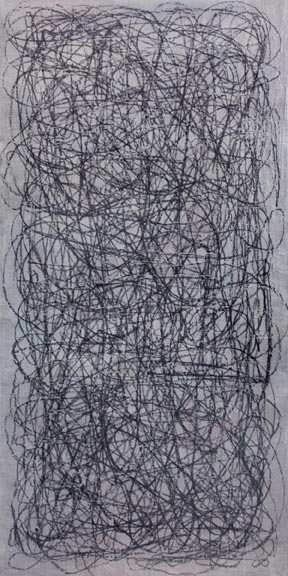By James Cox
I will write here a reflection of my semester working in different ways and influenced by difference people, mainly artists and experiences. In this writing, I will cover some of the methods I have used to make art, things I have read, some of my own thoughts, and discussions with my artists mentor Douglas Kornfeld. As for a thesis to this paper, I have thought of only one I can deem appropriate. To preface this thesis I should say that I began this semester with the intent to explore the various mediums within my work and find their various meanings to the whole of my art making, as well as to extend my knowledge of historical artists and points in art theory and practice. I began using a conceptual art making method which limited my creative nature in a way I had actually meant to avoid, and only when I was confronted in a critic with my artist mentor did I begin to look at the real questions I had to face in my art work. In this paper I only seek to layout in writing the story of this transformation viewable in my work.
I began my semester with a sincere desire to make works out of the separate elements of my undergraduate paintings: geometric faces, eyes, newspaper, arrows, scribbled lines, grout or concrete. At the same time I was inspired by the visual and written work of Sol LeWitt. I always felt I wanted to be more a conceptual artist. LeWitt’s “Paragraphs on Conceptual Art” seemed to me at the time to present a way of working on my intended projects and pursue a more conceptual means of working. First there was the removal of color as LeWitt states, “It is the objective of the artist who is concerned with conceptual art to make his work mentally interesting to the spectator, and therefore usually he would want it to be emotionally dry. (Fabozzi 181)” I considered some of my own ideas, along with comments received critics at the last residency, about using newspaper headlines. What is their significance? What is important and what is not? Should you be able to read the words? Should they become pattern? What happens when you use them in different ways? Along with these inquiries, I considered the covering up of graffiti on concrete surfaces. Combining those thoughts with LeWitt’s ideas, I thought of a work dealing with the importance of word selection and censorship.
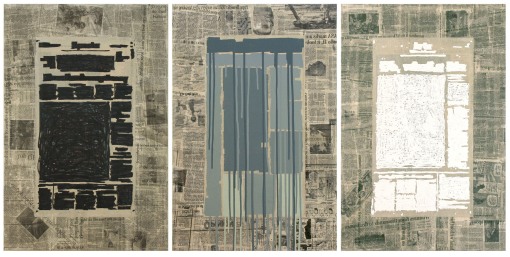 Obtuse (black, grey, & white) by James Cox
Obtuse (black, grey, & white) by James Cox
Only the centerpiece of the triptych Obtuse has a straightforward connection to graffiti. While graffiti has more than a vague visual relationship to my work, I never reached a point where I considered myself a graffiti artist, or even a graffiti inspired artist. Graffiti is more a part of the art history background in front of which to act out my own play. I looked into some if that background by reading Stephen Power’s The Art of Getting Over. In this book Powers lays out a brief history of writers of graffiti, primarily from the east coast. I could not relate to any of them. Power’s puts it succinctly, “graffiti is about doing it, and being it, and getting it … true graffiti lives in the moment. (Powers 6)” I could not find a direct way of “getting it” and moved forward with my newspaper studies on a both related and opposing work. In my piece Counter Contextual I focused on a selection of headlines mostly without specified topics.
Counter Contextual by James Cox
These experimental, conceptual works aided in my understanding of my use of newspaper. They have led me to think that newspaper, while being an element I am fond of from time to time, is not a current staple of my art. I also sought exploration inspired by Sol LeWitt: Wall Drawings, particularly as seen on the cover detail.
Cover: Sol LeWitt: Wall Drawings, and 08-03,05,08-2009 by James Cox
In 08-03,05,08-2009, I continued the idea of newspaper but made it practically invisible, then used graphite for the scribbled line, also flexing the idea of drawing a female face instead of a male. The resulting face is quite ambiguous. Perhaps it is a result of subconsciously trying to draw myself while trying to draw a woman. Maybe it is an indication that the way the face is drawn is of more importance visually than the gender of the face. Whatever meanings or reasoning that are the true root of this effect, I have come to consider the faces I put in my work to be an extension of myself and they are therefore likely to always to be seen as male. However, this does not prohibit their occasional ambiguous nature from being viewed as one gender or the other.
Though I gathered valuable insight into my artwork from these experimental pieces I began to feel choked, repressed, lacking a satisfaction on what I made. I pushed into another work of many faces to explore the sense of self-identity in each of my characters. Though I was excited for the new idea and wished to see it made on a grand scale I sensed that, while it may or may not have ever reached the viewer’s interpretation, my original idea was not being realized within the work. In essence my work began to develop a hollowness to it.
Along the time I was working on the projects previously shown, I also began reading Art As Experience by John Dewey. Even while his writing comes from a very different time, one that even predated the notable work of Sol LeWitt, I consider his writing beyond just insightful. His explanation of the live creature and its relationship to an environment with which it forms experience and accumulates meaning continues to fascinate me. Not soon after getting into his book’s topic, I found something both wonderfully explanatory and, since I was becoming more focused towards conceptualism, very terrifying.
“The rhythm of loss of integration with environment and recovery of union not only persists in man but becomes conscious with him; its conditions are material out of which he forms purposes. Emotion is the conscious sign of a break, actual or impending. The discord is the occasion that induces reflection. Desire for restoration of the union converts mere emotion into interest in objects as conditions of realization of harmony. With the realization, material of reflection is incorporated into objects as their meaning. Since the artist cares in a peculiar way for the phase of experience in which union is achieved, he does not shun moments of resistance and tension. He rather cultivates them, not for their own sake but because of their potentialities, bringing to living consciousness an experience that is unified and total, In contrast with the person whose purpose is esthetic, the scientific man is interested in problems, in situations wherein tension between the matter of observation and of thought is marked. Of course he cares for their resolution. But he does not rest in it; he passes on to another problem using an attained solution only as a stepping-stone from which to set on foot further inquiries. (Dewey 15)”
What I considered both satisfying and terrorizing was his descriptions of the artistic versus the scientific views to the rhythm he discusses, and that I related more the to scientific than the artistic. The ideas I was making art from were becoming more and more limited, or perhaps less and less meaningful. I seemed stuck and I could hardly realize it. I was very fortunate to meet with Douglas after completing the work of several faces in a kind of grid, Often Thought. This work took me even further towards working as Sol LeWitt. What I discussed with Douglas was how I wanted to represent the idea that these faces are made from the thoughts I have as they are made, as well as from their environment in the work of art, i.e. the scribbles were thoughts and therefore a background as well as subject the faces expressed. Douglas was aware this was not seen in the finished work. He was not thrilled and suggested that I try making a series of small, rapid works to push out a lot of ideas without making the work to be finished thoughts. He explained that I needed to allow myself to react without thinking.
Often Thought by James Cox
I had planned to make another work, on a larger scale, which would have been nearly identical to “Often Thought.” After talking with Douglas, I realized putting efforts into that would be extremely counterproductive to the development in understanding my artwork. Douglas agreed, indicating that there was little difference between the larger project and Often Thought, and saying, “You’ve already made it.” I revisited some of my older drawings from high school and early college (see White Pony Full Ink Spread). They are from a time before I felt works of art had to have meaning or be planned out. Douglas’s comment on them was simply to ask the question, “What made you think that’s not art?” Discussing these also led me back to what I had been reading from LeWitt and Dewey. LeWitt said in his writing that, “If the artist wishes to explore his idea thoroughly, then arbitrary or chance decisions would be kept to a minimum, while caprice, taste and other whimsies would be eliminated.” Douglas saw the result of following such a guide and told me what he was once told, “give into your whims.”
 White Pony Full Ink Spread by James Cox, circa 2002
White Pony Full Ink Spread by James Cox, circa 2002
When I went back to John Dewey’s writing, it had deeper impact on how I saw art making. When discussing the act of expression Dewey states that,
“The primitive and raw material of experience needs to be reworked in order to secure artistic expression… With respect to the physical materials that enter into the formation of a work of art, everyone knows that they must undergo change… It is not so generally recognized that a similar transformation takes place on the side of the ‘inner’ materials, images, observations, memories and emotions…Nor are there in fact two operations, one performed upon the outer material and the other upon the inner and mental stuff. The work is artistic in the degree the two functions of transformation are effected by a single operation. (Dewey 74, 75)”
Dewey’s consideration to the transformation of experience and physical material into a work of art became an important view as I began a series of smaller, rapid works.
Various Works by James Cox
These quick, multimedia works practiced the mixing up of my past icons and qualities of experience both physical and emotional in material. Douglas and I discussed various images, words/writing, as well as arrangement of different elements and affects. He explained some of my smaller works were more successful, as apposed to the larger ones, for the sense that the former gave a kind of visual statement while the latter attempted a complex narrative. Considering this idea I found I am not interested in making a work of art tell a story but rather defining a moment in time, a brief experience or expression.
In some of these new, somewhat expressionistic, works I also found something familiar. I recall having heard my work compared to Jean-Michel Basquiat more than a few times through my first residency last June. In this new work I began resembling, more so than my past work, the style in which Basquiat worked. So I read about his work, reviewing many images and even seeing the 1996 biographical film directed by Julian Schnabel. What I gathered from my research is a view of Basquiat through an art historical perspective, which shows him as a graffiti artist who’s work spoke against the emotionally void, more conceptually driven artists popularized in the mid 1900s. Basquiat’s paintings were also seen as a kind of reinvention and response to the older modernists, while rejecting a somewhat convoluted idea in post-modernism attempting to respond to early modernism the way the first modernists work related to the more classical arts. In my understanding, Sol LeWitt was moving along those same lines. Reaching toward a minimal, conceptual art was a search for a modernism to modernism, in which art would move beyond representation of life as we experience it. Much in a way the first expressionist’s art reached beyond a need to represent life with realism. Thinking of this, I was not surprised to find Basquiat considered a neo-expressionist. His art offered a new, raw brand of art making, which then became objectified by the art world. Much the same way musical performers were, and are, objectified by pop-culture. Basquiat’s influences were not uncommon, other than the aspects of his personal life and the book of Grey’s Anatomy. His more common, or well-known, influences were Leonardo Da Vinci, Picasso, Matisse, and the Hip-Hop music of his generation.
What then am I pulling from my knowledge and understanding of Basquiat? I’ve begun to share in his fearless use of imagery and direct color as temporal placeholders for my own views and experiences. His work with graffiti is not the same, as viewers might want to believe mine. We differ in experience and background magnificently. What might be the similarity to connect our relationships to graffiti art? It may simply be that it has existed as part of our environments growing up. The way it was part of mine, however, was more as part of an art historical knowledge or background. I was not lucky enough to see much graffiti in my small suburban town. Most of what I saw was only glimpses on the sides of railway cars. Yet I, like Jean Michel Basquiat, took the art which I knew growing up and made art which both was inspired by and responded to it. Since my work resembles his, I have given into making work directly or consciously influenced by his.
My transition over this semester from a highly conceptual approach to art making to now a more neo-expressionist approach, leads me to a kind of theory. The theory is that as an artist, I somehow act through my artistic development, a kind of mimicry of art history as I become aware of it. What I was doing at the beginning of the semester, was letting that enactment of history, specifically my knowledge of Sol LeWitt, take over my art making. I was using the methodology of someone else to make my art and when it was about to take me too far off track, my artist mentor Douglas Kornfeld brought me back to my beginning as an artist. This is what led me to move forward into making art more alike to Jean-Michel Basquiat. The important difference in making art that seems like Basquiat’s is that I am not allowing his methodology to make my art. I am instead able to employ processes he used, but with my own subject matter, my own meanings, and for my own reasons.
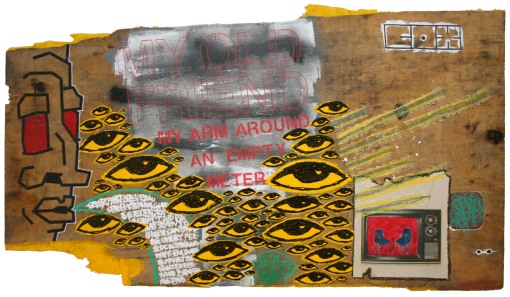 Behind the Pretty Lights by James Cox
Behind the Pretty Lights by James Cox
Bibliography
Dewey, John. Art As Experience. G.P. Putnam’s Sons, New York: Capricorn Books, 1958. Print.
Emmerling, Leonhard. Jean-Michel Basquiat. Taschen Books, 2003. Print.
Fabozzi, Paul F. “Sol LeWitt: Paragraphs on Conceptual Art (1967).” Artists, Critics, Context Readings in and Around American Art since 1945. Upper Saddle River: Prentice Hall, 2001. 180-184. Print
LeWitt, Sol. Sol LeWitt: Wall Drawings. Damiani: 2006. Print
Mayer, Marc. Mayer, Marc. “Basquiat in History.” Basquiat. Singapore: Merrel Publishers Limited, 2005. 41-57. Print
Mayer, Marc. Sirmans, Franklin. “In The Cipher: Basquiat and Hip=Hop Culture” Basquiat. Singapore: Merrel Publishers Limited, 2005. 91-105. Print
Powers, Stephen. The Art of Getting Over. China: St. Martin’s Press, 1999. Print.



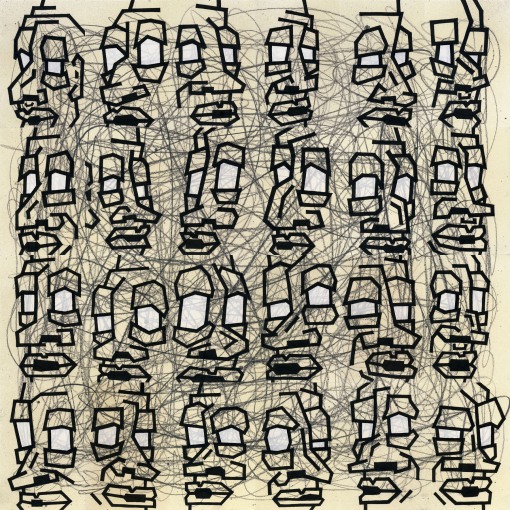
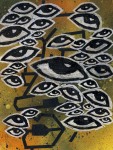
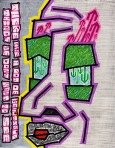


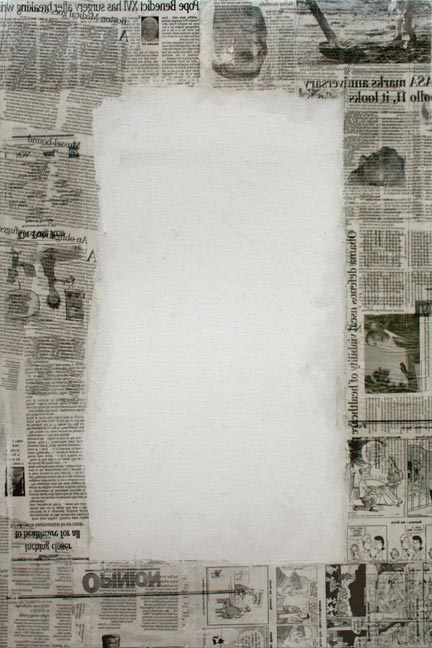
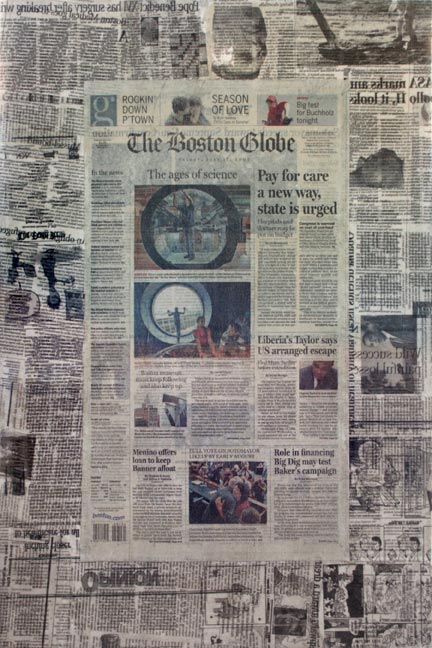
![In_Order_To_Supress-[grey]-web In Order To Supress](https://coxart.files.wordpress.com/2009/08/in_order_to_supress-grey-web1.jpg?w=510)
